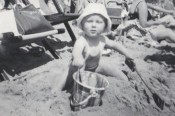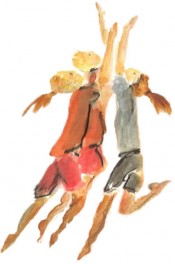 Bay Area Teacher Training
Bay Area Teacher Training Waldorf Training in Australia
Waldorf Training in Australia The Journey is Everything
The Journey is Everything Roadmap to Literacy Books & Courses
Roadmap to Literacy Books & Courses Everything a Teacher Needs
Everything a Teacher Needs Bringing Love to Learning for a Lifetime
Bringing Love to Learning for a Lifetime Train to Teach in Seattle
Train to Teach in Seattle Space speaks. Its language is movement.
Space speaks. Its language is movement. Great books for Waldorf Teachers & Families
Great books for Waldorf Teachers & Families Apply Today: New Cohort Starts Nov. 2025
Apply Today: New Cohort Starts Nov. 2025 Association for a Healing Education
Association for a Healing Education Immersive Academics and Arts
Immersive Academics and Arts Full-Time Teacher Education
Full-Time Teacher Education
 Jamie York Books, Resources, Workshops
Jamie York Books, Resources, Workshops Transforming Voices Worldwide
Transforming Voices Worldwide Caring for All Stages of Life
Caring for All Stages of Life ~ Ensoul Your World With Color ~
~ Ensoul Your World With Color ~ Summer Programs - Culminating Class Trips
Summer Programs - Culminating Class Trips Quality Education in the Heartland
Quality Education in the Heartland Flexible preparation for your new grade
Flexible preparation for your new grade Waldorf-inspired Homeschool Curriculum
Waldorf-inspired Homeschool Curriculum Middle School Science With Roberto Trostli
Middle School Science With Roberto Trostli
Would you like to become a sponsor?
Waldorf News

Old-Fashioned Play Builds Serious Skills
July 15, 2013
On October 3, 1955, the Mickey Mouse Club debuted on television. As we all now know, the show quickly became a cultural icon, one of those phenomena that helped define an era. What is less remembered but equally, if not more, important, is that another transformative cultural event happened that day: The Mattel toy company began advertising a gun called the “Thunder Burp.” I know — who’s ever heard of the Thunder Burp? Well, no one. The reason the advertisement is significant is because it marked the first time that any toy company had attempted to peddle merchandise on television outside of the Christmas season. Until 1955, ad budgets at toy companies were minuscule, so the only time they could afford to hawk their wares on TV was during Christmas. But then came Mattel and the Thunder Burp, which, according to Howard Chudacoff, a cultural historian at Brown University, was a kind of historical watershed. Almost overnight, children’s play became focused, as never before, on things — the toys themselves. More »

Save the Readers! A Defense of "Deep Reading"
June 29, 2013
“Deep reading”—as opposed to the often superficial reading we do on the web—is an endangered practice, one we ought to take steps to preserve as we would a historic building or a significant work of art. Its disappearance would imperil the intellectual and emotional development of generations growing up online, as well as the perpetuation of a critical part of our culture: the novels, poems and other kinds of literature that can be appreciated only by readers whose brains, quite literally, have been trained to apprehend them. More »

What Learning Cursive Does for Your Brain: Cursive Writing Makes Kids Smarter
June 24, 2013
Ever try to read your physician’s prescriptions? Children increasingly print their writing because they don’t know cursive or theirs is unreadable. I have a middle-school grandson who has trouble reading his own cursive. Grandparents may find that their grandchildren can’t read the notes they send. Our new U.S. Secretary of the Treasury can’t (or won’t) write his own name on the new money being printed. When we adults went to school, one of the first things we learned was how to write the alphabet, in caps and lower case, and then to hand-write words, sentences, paragraphs, and essays. Some of us were lucky enough to have penmanship class where we learned how to make our writing pretty and readable. Today, keyboarding is in, the Common Core Standards no longer require elementary students to learn cursive, and some schools are dropping the teaching of cursive, dismissing it as an “ancient skill.” The primary schools that teach handwriting spend only just over an hour a week, according to Zaner-Bloser Inc., one of the nation's largest handwriting-curriculum publishers. Cursive is not generally taught after the third grade (my penmanship class was in the 7th grade; maybe its just coincidence, but the 7th grade was when I was magically transformed from a poor student into an exceptional student). Yet scientists are discovering that learning cursive is an important tool for cognitive development, particularly in training the brain to learn “functional specialization,” that is capacity for optimal efficiency. In the case of learning cursive writing, the brain develops functional specialization that integrates both sensation, movement control, and thinking. Brain imaging studies reveal that multiple areas of brain become co-activated during learning of cursive writing of pseudo-letters, as opposed to typing or just visual practice. More »

Ten Tenets of a Balanced Whole Youth Sports Experience
June 24, 2013
Kim John Payne has co-authored Whole Child Sports (to be released this August) with Scott Lancaster and Luis Fernando Llosa, who explains the purpose of their work in this way: “Our cause, simply put, is our kids, your youngsters, everyone’s children. …We’ve developed a solution-based book (Beyond Winning: Smart Parenting in a Toxic Sports Environment-due in late August) and a grass roots movement (Whole Child Sports) to combat the win-at-all-costs culture that is robbing our children of their youth, athletic development, physical health, and, perhaps most importantly, love of free play.” More »

Social Development in the Very Young Child
June 10, 2013
Few areas of children's development bring us more questions than their social and emotional development. Perhaps it is because we know that this is an extremely complex area of human development, fraught with sensitivity; perhaps we are also aware of its central place in life's journey. We carry our social selves into every situation of life, and as contemporary psychologist and researcher Daniel Goleman has confirmed, our social capacities far outweigh our cognitive ones in determining success and satisfaction in our lives. It is also the area in which we have so much to contribute to the future of humanity; in addressing the world's most complex problems. This is the realm in which our soul forces – thinking, feeling, and willing – intersect, and require balance and inner development to manifest their potential. But where do these capacities begin? It is a long journey from infancy to a maturity of our social capacities that enables us to wear a garment that aligns our social capacities with our spiritual hopes and intentions – that enables us to walk through daily life meeting the world out of our best selves. More »
 Recent Jobs
Recent Jobs
View more jobs »
 Newsletter Archive
Newsletter Archive
 Join the Mailing List!
Join the Mailing List!
Stay Connected…
Each week receive the Waldorf News Weekly Update, full of news, events, and more. Keep abreast of what's happening with Waldorf education.
 RSS Feeds
RSS Feeds